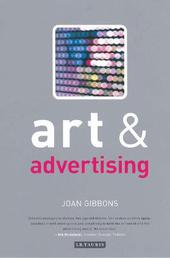
|
Art and Advertising
Paperback / softback
Main Details
| Title |
Art and Advertising
|
| Authors and Contributors |
By (author) Joan Gibbons
|
| Series | Art and Series |
|---|
| Physical Properties |
| Format:Paperback / softback | | Pages:208 | | Dimensions(mm): Height 210,Width 148 |
|
| Category/Genre | Industrial / commercial art and design |
|---|
| ISBN/Barcode |
9781850435860
|
| Classifications | Dewey:741.67 |
|---|
| Audience | | Professional & Vocational | |
|---|
|
Publishing Details |
| Publisher |
Bloomsbury Publishing PLC
|
| Imprint |
I.B. Tauris
|
| Publication Date |
27 May 2005 |
| Publication Country |
United Kingdom
|
Description
Over the past twenty-five years the relationship between art and advertising has become increasingly varied and complex, with artists appropriating the billboards and neon displays of the ad world, and advertising strategies borrowing both the tactics and imagery of contemporary art. This wide-ranging book charts key points of contact, overlap and exchange between the two fields. Joan Gibbons looks at the work of a number of artists from Barbara Kruger, Les Levine and Victor Burgin though to Sylvie Fleurie and Swetlana Heger and at cutting edge advertising campaigns including Benson's Silk Cut, Benetton's Shock of Reality and US agency Wieden and Kennedy's work for Nike. She discusses too the various collaborations and crossovers between art and advertising: the work of artist, director and creative Tony Kaye; adman turned collector Charles Saatchi and the issues of celebrity and branding that surround him; and the endorsement of art by highly branded products such as Absolut Vodka, to show that art and advertising are more mutually enriching than ever.
Author Biography
Joan Gibbons is a Senior Lecturer at Birmingham City University and Course Director of the MA in Visual Arts: Critical and Contextual Practices.
Reviews'Gibbons cites aspects of the development of both advertising and art in the last century to make a case for how the relationship between art and advertising is actually mutually beneficial, rather than purely exploitative.' Media Week
|